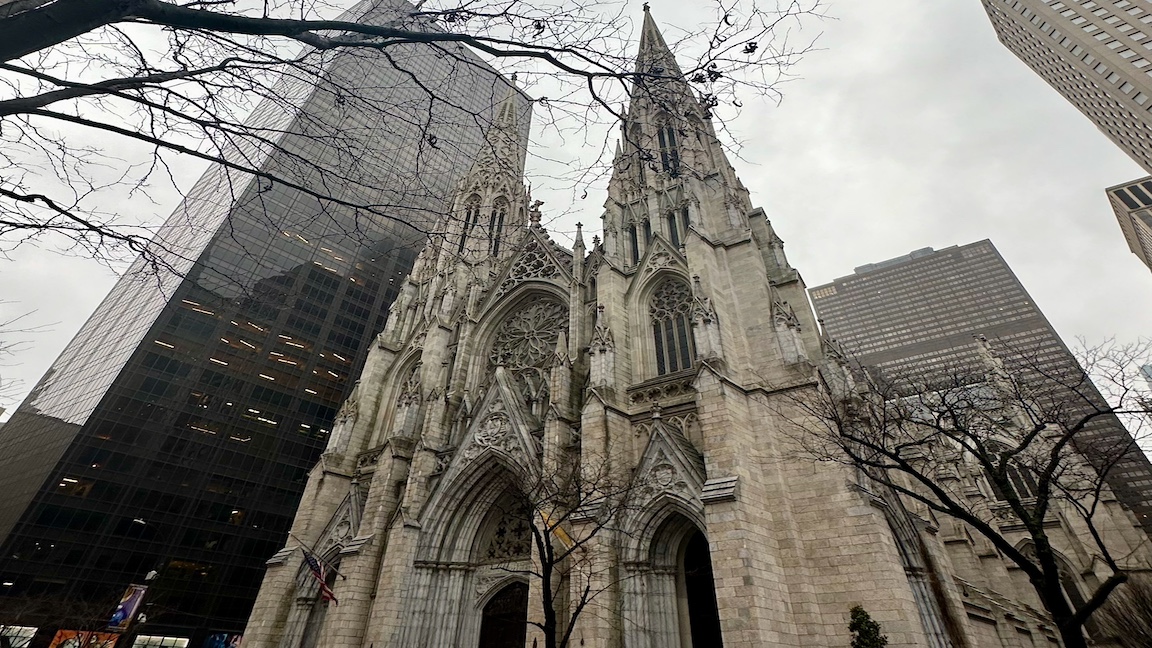
NEW YORK — “La Paz sea contigo.” This phrase, La Paz sea contigo, means “may the Peace be with you,” and may have been the only time the churchgoers at St. Patrick’s Cathedral in New York City interacted with each other on a recent Sunday.
With a capacity for approximately 2,400 people, the cathedral attracts more than 5.5 million visitors annually, making it one of New York’s major religious tourist attractions. During Sunday masses, which are considered the Lord’s Day for the Catholic Church, St. Patrick’s Cathedral hosts eight services, including one in Spanish at 4:00 pm. In between masses, the church welcomes tourists to explore its design and tradition.
This means that the time in between masses is extremely short. The church also has extra security personnel who ask churchgoers to show the interior of their bags before entering the seating area for mass. As a result, the parishioners at the cathedral do not have any time to interact with each other — until the passing of peace.
The ritual happens during communion, which encompasses the prayers for peace and the communion itself. The greetings happen after the Prayer for Peace, and before the communion, where the priest asks that peace extends to all people, present or not, so that they can fully live the mystery of Christ. At that moment, people can share their wishes for peace with one another.
It is also the moment to observe the vast difference between those who frequent church. We see families hugging one another, toddlers who take the opportunity to finally run around and talk with each other, and those who come in solitude talking to their neighbors. It is the moment people step out of their own prayers to extend their votes of peace to the community.
“La Paz sea contigo,” are the wishes shared among the faithful, who shake each other’s hand – except a man with glasses who did not shake anyone’s hand and, instead, held up the two-finger peace sign in response to the greetings.
Growing up Catholic, I had already been to many masses in different churches around the world. Most of the time, I tend to prefer more charismatic churches that promote interaction between churchgoers. However, the solitude of St. Patrick’s promotes a more introspective and direct connection with the ceremony. Sylvia Rivas, Assistant to the Exec. Director of Development, said most people who attend mass at St. Patrick’s Cathedral seek solace and prayer.
This elevates the prayers for peace, turning them into a more cherished and extended experience compared to other churches. I was taken aback by the significant number of parishioners at St. Patrick’s Cathedral who were praying alone, particularly noteworthy considering that Hispanic masses typically bring large families together. Observing young women in their twenties, older women with veils, and solitary men reaching out to say “La Paz sea contigo” adds an intimate and meaningful dimension to the moment, creating a sense of mutual understanding.
St. Patrick’s Cathedral is in the Midtown Manhattan district of New York City and serves as the principal church for the Archbishop of New York. The cathedral stands directly across from Rockefeller Center.
Back in the 5th century, Saint Patrick undertook his mission in a predominantly pagan Ireland. His efforts to evangelize led to a significant portion of Ireland’s population embracing Christianity, according to the cathedral’s website. The Catholic faith has remained a resilient force in Ireland ever since, especially in the southern part of the country. His legacy remains alive, represented by the large New York City cathedral.
St. Patrick’s Cathedral, designed by James Renwick Jr., is the most extensive Gothic Revival Catholic cathedral in North America, according to the Cathedral’s website.
